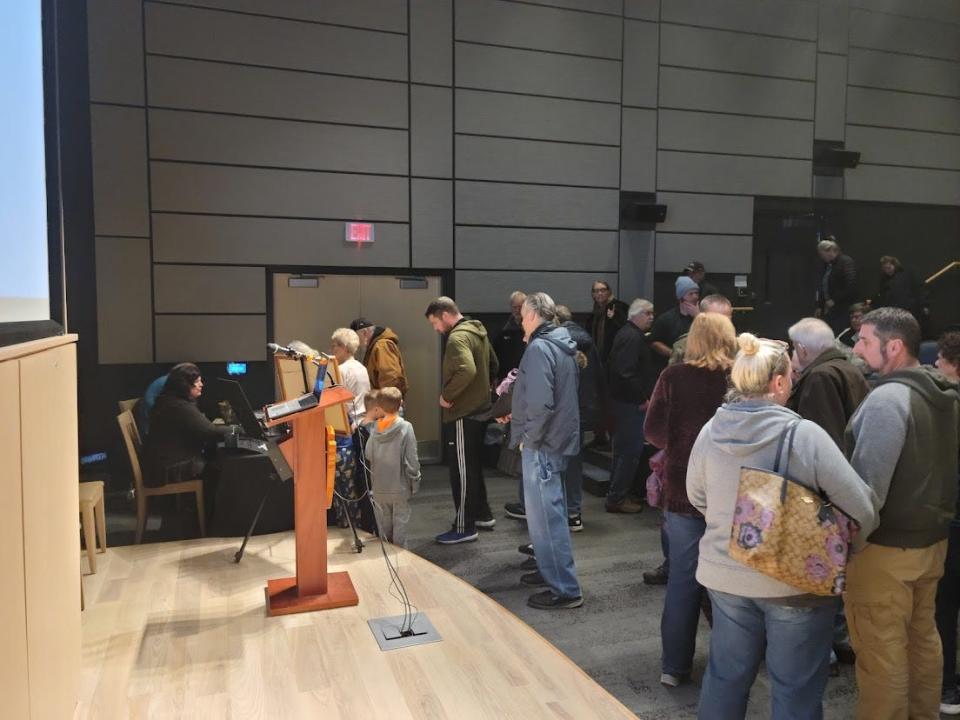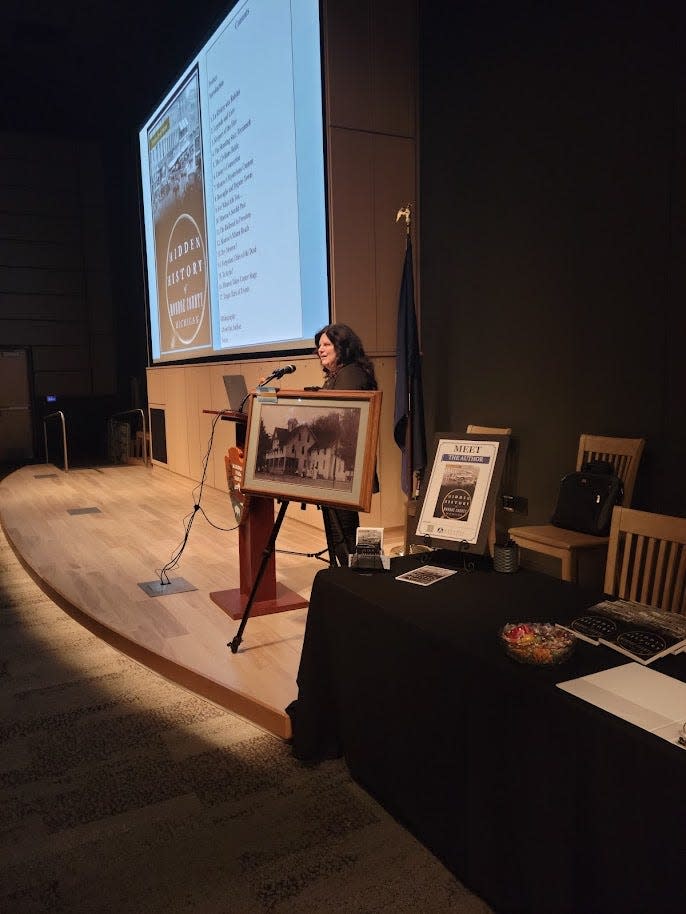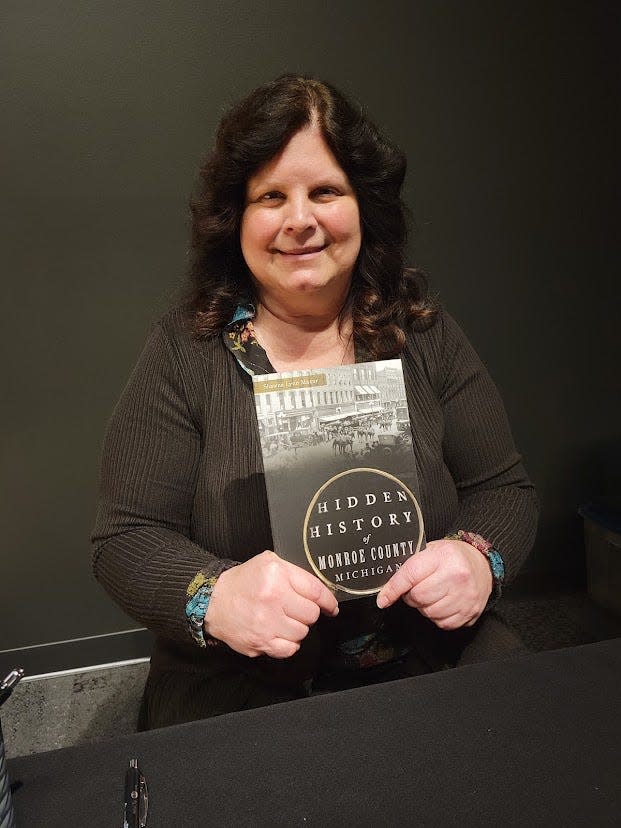Author explores Monroe County's hidden history in new book
Packed auditorium gets surprises from history




Shawna Mazur grew up in Monroe County and has always had a fondness for history. In fact, it’s such an important piece of her life that she chose to pursue the subject in college, and now works for the National Parks Service.
On Sunday, Mazur presented her new book, “The Hidden History of Monroe County Michigan,” to a packed auditorium at the River Raisin National Battlefield Park Visitors Center.
“I feel that your hometown is always the last place you learn about,” Mazur said. “I’m floored by how rich Monroe County’s history is. The more I discover, the more I realize how important it is.”
The book was Mazur’s three-year passion project, and she spent many months preparing the hour-long, interactive and self-proclaimed “informal” presentation.
While Mazur touched on lighthouses and some of the “forgotten” ghost towns in Monroe County, the majority of her focus surrounded the Monroe Piers.
Taking the audience on a nostalgic journey back in time to what she calls the glory days of Monroe, Mazur discussed how Monroe was once a popular tourist destination. This popularity stemmed from canal access, where people would come down from Detroit and surrounding areas via steamboat.
“While the canal was originally constructed with the intent of commercial use, this fell to the wayside when the railroad was developed,” Mazur said.
However, the canals opened the doors for more recreational activities, such as lotus picking, swimming and socializing.
After the Monroe Yacht Club formed in 1886, a successful regatta developed in the area. While the regatta began as an annual event, it soon was held multiple times throughout the year and drew attendees from as far as Pennsylvania and New York. For the early 1900s this was quite the distance to travel.
A beautiful social culture formed around the piers. Many of the visitors came to stay at the luxurious Lotus Hotel and eat the famous chicken dinner it served. Additionally, a large bathhouse, casino and wooden roller coaster pulled in the people and crowded incoming boats and railway cars.
While this social scene thrived for many years, it dwindled at the onset of World War I and disappeared at the introduction of the automobile. All of these are facts that many Monroe County residents would be shocked to learn are rooted in their home’s history.
Many of the attendees of Mazur’s presentation audibly voiced their surprise at these revelations.
“I’m fascinated to learn more about the history of where I live,” Sue Wager said. “I didn’t appreciate the depth of history contained in Monroe, and I learned a lot. I want to learn more. I want to know how it’s possible that it changed so drastically.”
Mazur gave a great many details of this hidden history over the course of the hour, but also encouraged those interested in learning more to read her book, specifically Chapter 12, “Monroe’s Miami Beach,” which continues the exploration of the Monroe Piers and what happened to many of the buildings that were so popular barely more than 100 years ago.
Following her presentation, Mazur spoke one-on-one with many of the attendees and autographed copies of “The Hidden History of Monroe County Michigan.”
Mazur’s book can be purchased at a online retailers, such as Target, Amazon and Walmart. It can also be found locally at the River Raisin National Battlefield Park Visitors Center, Yinger’s Pharmacy and Sauer Furniture.
“I’ve always been interested in history, and I always want to keep learning,” Mazur said. “I grew up across the street from the battlefield, and it’s a shame that I didn’t know the significance of it for a long time.”
This article originally appeared on The Monroe News: Local author Shawna Mazur writes book about Monroe's history

